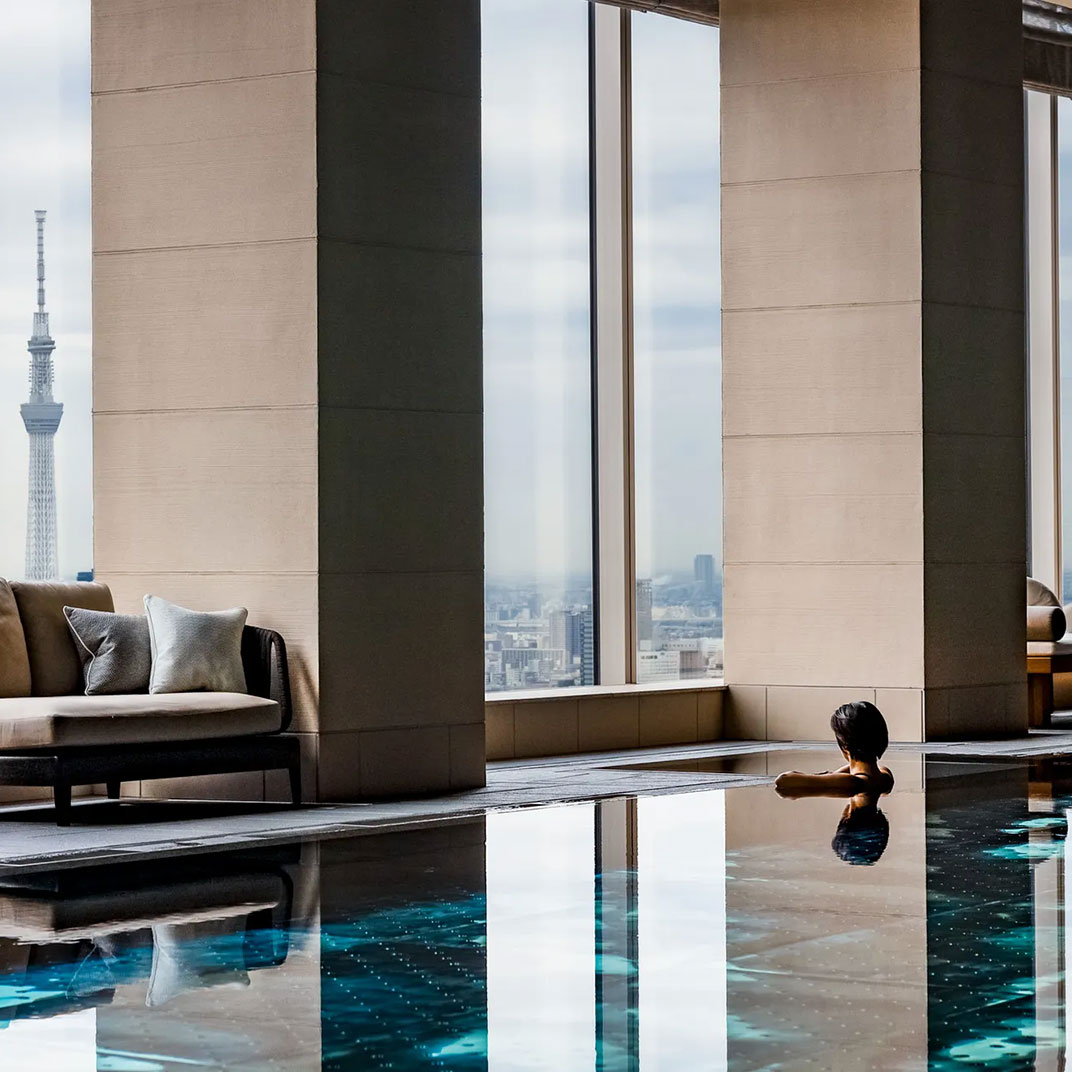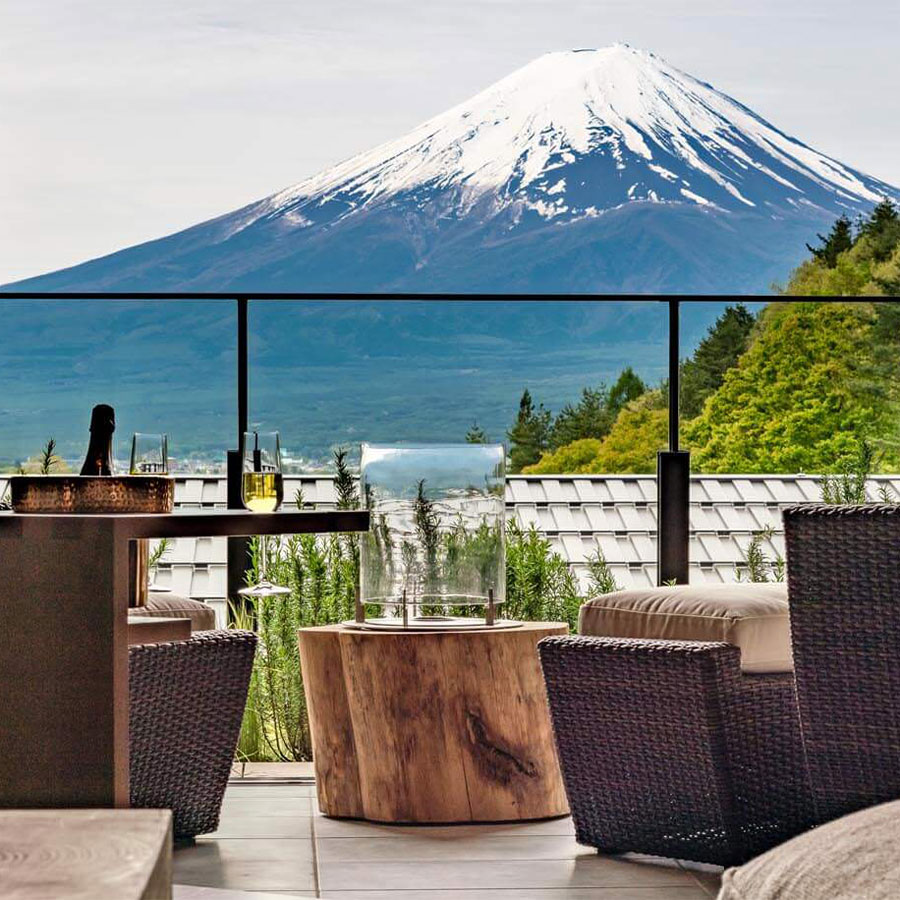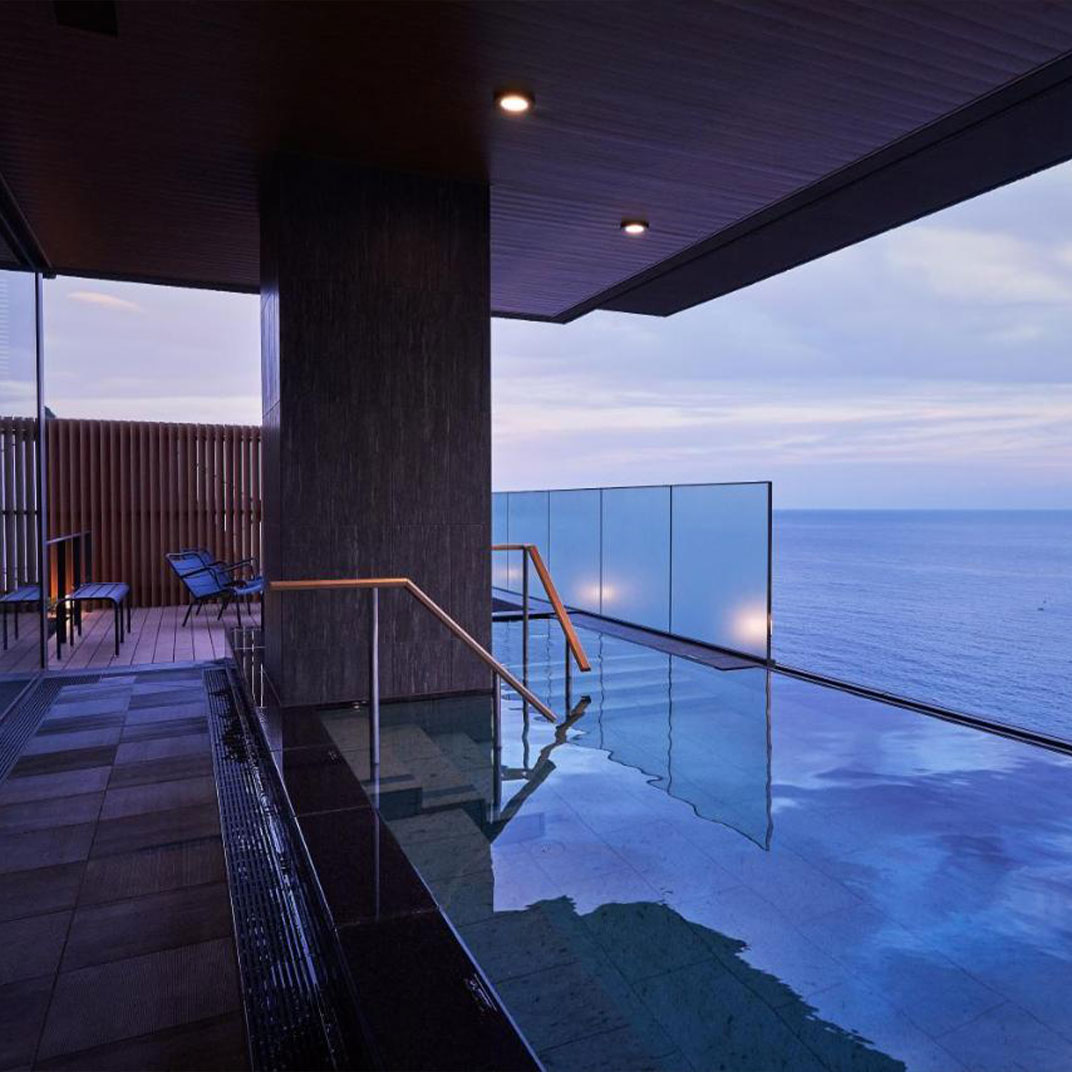Relaxing in a communal hot bath (ofuro) is a time-honored ritual in Japan and one which many international visitors are keen to try. Explore options for experiencing this quintessential Japanese tradition in and around Tokyo, and find out more about the history and etiquette of bathing culture.
Luxurious City Spas
Indulge yourself at one of these MICHELN Guide hotels in central Tokyo, each of which offer a Japanese-style ofuro experience, along with a beautiful swimming pool, signature spa treatments and breathtaking city views.Bvlgari Hotel Tokyo
Occupying the top five floors of the Tokyo Midtown Yaesu Building near Tokyo Station, the Bulgari combines Italian flair and Japanese artistry. The gorgeous Bulgari Spa area floor includes a Japanese bath, sauna, steam room and nine treatment rooms, plus a showstopping emerald green swimming pool.

Four Seasons Hotel at Otemachi
Drawing on the concept of “East meets West”, the Four Seasons Hotel Tokyo at Otemachi blends a Japanese Zen aesthetic with modern luxury to provide a spa experience that will leave guests feeling relaxed and refreshed in mind and body. This sky-high urban retreat overlooks the Imperial Palace.
Aman Tokyo
The hotel employs the timeless beauty of natural materials to create a sense of minimalist sophistication, and this design concept is carried through to the comprehensive spa, which includes a 30-meter pool and dedicated yoga and Pilates studios. Take advantage of the complimentary wellness classes to complete your blissful experience atop the Otemachi Tower at the Aman Tokyo.
Going Local at the Sento
For a completely different kind of bathing experience, consider visiting a Japanese public bathhouse, or sento. These communal baths (segregated by gender) played an important role in daily health and hygiene in Tokyo in the post-war years, when the population was growing rapidly and many cramped dwellings didn’t have bathing facilities. Moreover, sento served as community hubs for social interaction, offering a chance to catch up with friends and neighbors for a leisurely chat. They began dwindling in the 1960s as more homes became equipped with efficient modern bathrooms, but you can still find sento in the city, and now younger generations of Tokyoites and foreign visitors alike are discovering their charms. Most sento open in the early afternoon and close around 1 AM. Visitors should take their own towels and amenities.
One sento stalwart with a decidedly retro vibe is Atami-yu, a fixture in Tokyo’s Kagurazaka neighborhood since 1954. The geisha of Kagurazaka used to visit twice a day, first to get ready for work, and then to wash away their makeup and their fatigue at the end of a long evening. These days Atami-yu attracts a diverse range of clients, including international visitors looking for an authentic sento experience. The water in the ofuro is still heated by burning wood and, like many Tokyo sento, the walls are decorated with a mural of Mt. Fuji, which is thought to bring prosperity.

Onsen—Nature’s Warm Embrace
In contrast to sento, which use regular water, Japan’s onsen (hot spring) facilities utilize mineral-rich water naturally heated by the earth. Onsen water must meet certain requirements, including being at least 25 degrees Celsius at the source and containing specified amounts of minerals. Onsen bathing is mentioned in records dating back to the sixth century, and this history is intertwined with Shinto and Buddhist traditions, symbolizing purification, healing and spiritualism. In the Middle Ages samurai visited onsen to rest and recuperate after battle, and onsen towns flourished around the country to meet these needs. Over time, the appeal of onsen spread to the general populace and they became popular vacation destinations.The onsen experience is best savored in a leisurely fashion with an overnight stay at a hot spring resort. Easily reached from Tokyo and surrounded by nature, a stay at one of these MICHELIN Guide hotels is the perfect introduction to the charms of onsen.

FuFu Kawaguchiko
Set among a tranquil forest in Yamanashi prefecture, the hotel is a short walk from the shores of Kawaguchiko, one of the five scenic Fuji Lakes. But that’s not the half of it—every guest room has a direct view of iconic Mt. Fuji and a private open-air bath. Communal baths and spa treatments are also available. The beautifully-presented kaiseki dinners showcase the best of local ingredients and the loving attention to detail that characterize Japanese cuisine at its finest. Take an express bus from Shinjuku or Tokyo to Kawaguchiko Station, and from there it’s a 15-minute taxi ride to FuFu Kawaguchiko.
Atami Izuzan Karaku
The seaside city of Atami is the gateway to the Izu Peninsula in Shizuoka Prefecture. Situated on a hilltop a short distance from the city center, Atami Izuzan Karaku affords stunning views of Sagami Bay. Every room has a private terrace and bath, while the comprehensive communal spa features both indoor and outdoor baths. Drawing on the local marine bounty, the hotel offers a sushi bar and a restaurant specializing in kaiseki-style seafood dishes. To reach Atami Izuzan Karaku, take a bullet train or the Odoriko express train from Tokyo to Atami Station and then catch the hotel’s complimentary shuttle bus.
Bathing Etiquette 101
Bathing Japanese-style comes with some simple rules to ensure that everyone can enjoy the experience to the fullest. After undressing and stowing your clothes, wash and rinse your entire body in the showering area. Washing hair is optional, but long hair should be tied up before entering the communal bath. You can bring along a small towel for modesty, but don’t take it into the water—drape it over your head or leave it neatly folded on the side. Ease your way gently into the ofuro to let your body adjust to the temperature, and enjoy the sensation of feeling the tension and stress start melting away. If you’re feeling a bit shy about the communal aspect, you might feel more comfortable bathing last thing at night when there tend to be fewer people. Some onsen facilities also have private baths available; these must usually be booked in advance and may require an additional fee.Children are welcome at sento and at many onsen hotels, and it’s usually fine for them to accompany parents of either gender into the baths up until the age of about 7. Do ensure that youngsters understand that the ofuro isn’t a swimming pool, and that they shouldn’t jump into the water or run around. Some facilities provide special bathing chairs to make it easier to wash infants, but out of courtesy to others, it’s best to wait until little ones are potty-trained before taking them into the communal bath. While an increasing number of facilities are relaxing the rules, some sento and onsen still don’t allow entry to guests with tattoos, so it pays to check in advance if you’re inked. One option is to cover smaller tattoos with waterproof bandages.
Top Image: Atami Izusan KARAKU



















